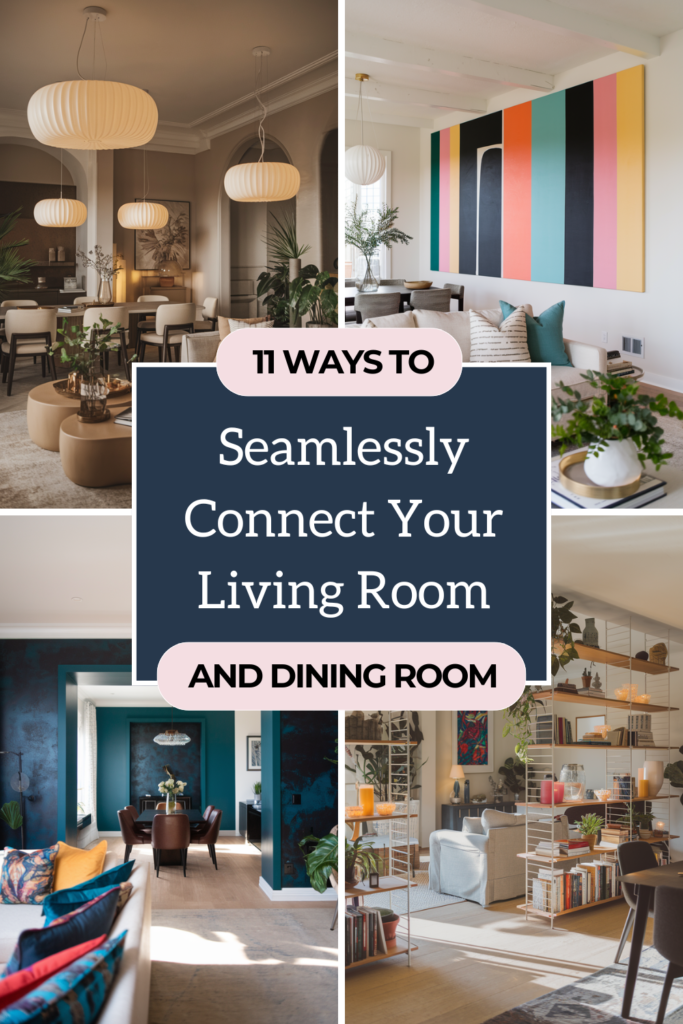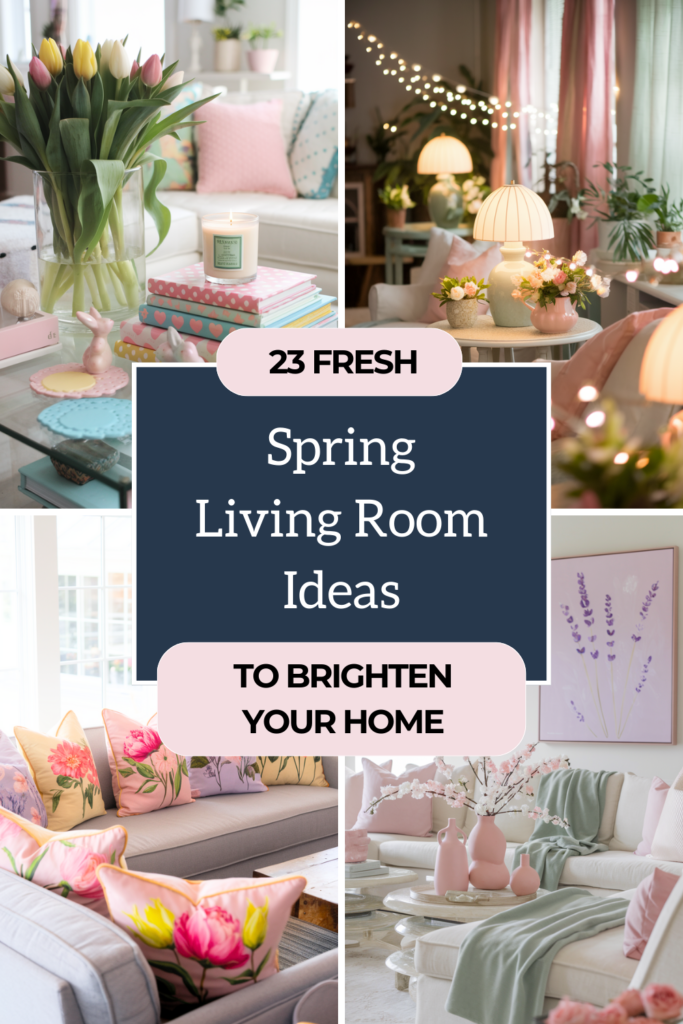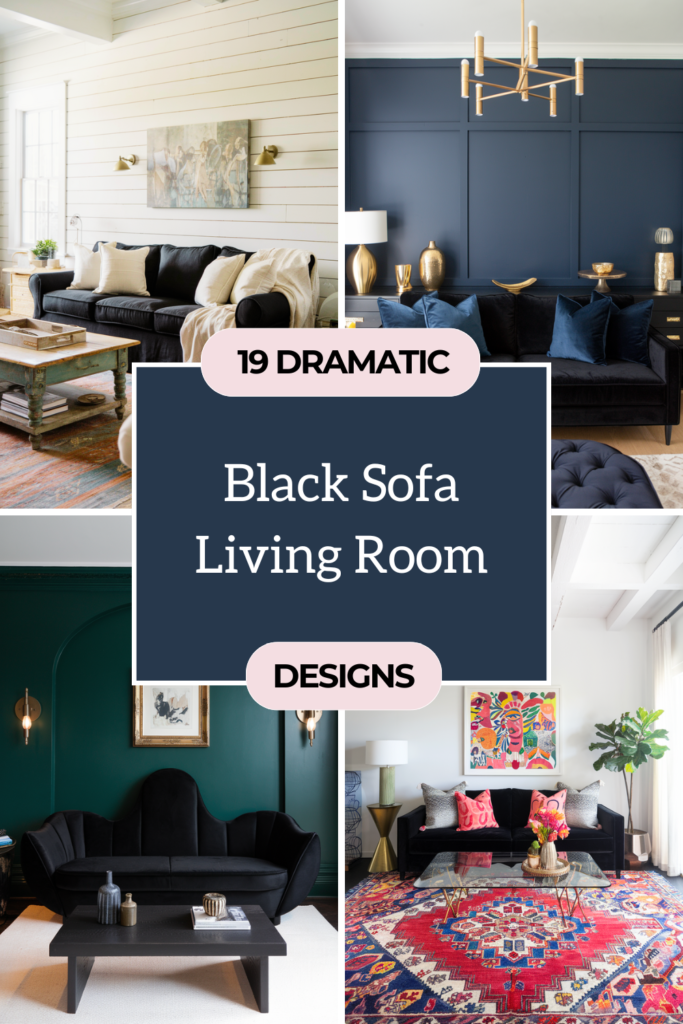Today I’m going to be diving into one of my favorite home design challenges: creating a seamless flow between your living and dining rooms. When these two gorgeous spaces harmonize, your home not only looks more cohesive but also feels more inviting and spacious. So, grab your favorite beverage, and let’s chat about how to make your living and dining areas sing in unison.
1. Seamless flooring flow
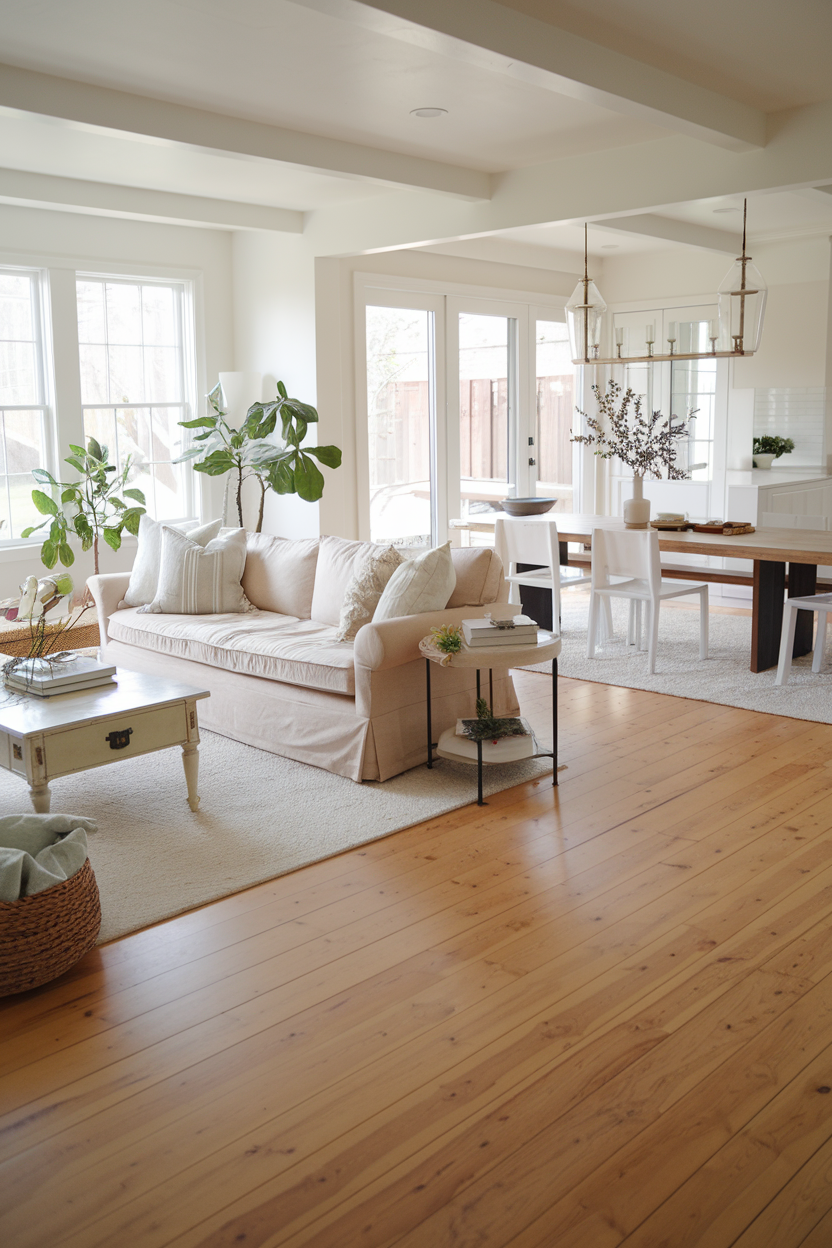
I’ve found that using the same flooring material in both rooms works wonders. It creates a smooth, uninterrupted flow that makes the space feel larger and more connected. Whether you’re a fan of hardwood, tile, or luxury vinyl, extending it across both areas ties everything together beautifully.
2. Cohesive color palette
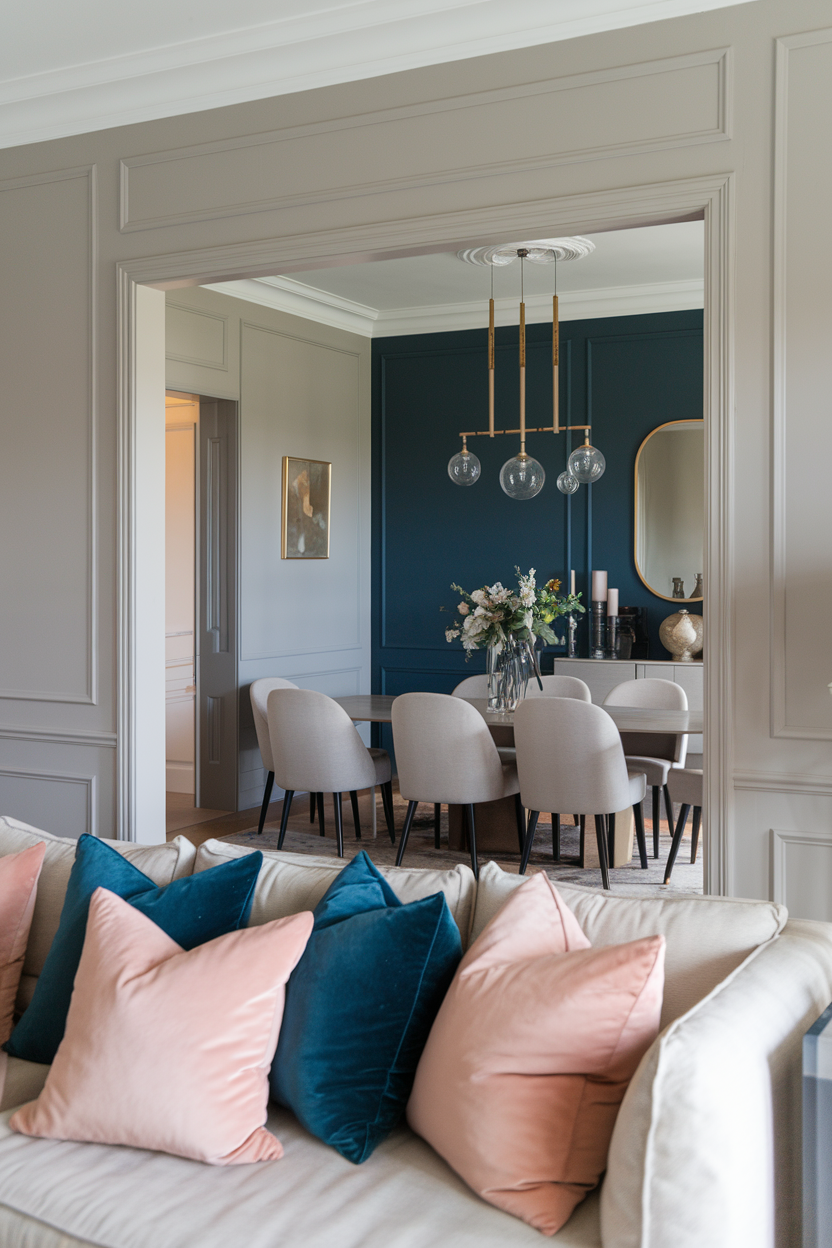
Choosing a cohesive color scheme is like giving your rooms a shared language. I love starting with a neutral base and then adding complementary accents that echo in both spaces. This approach not only unifies the areas but also allows your personal style to shine through.
3. Coordinated lighting fixtures
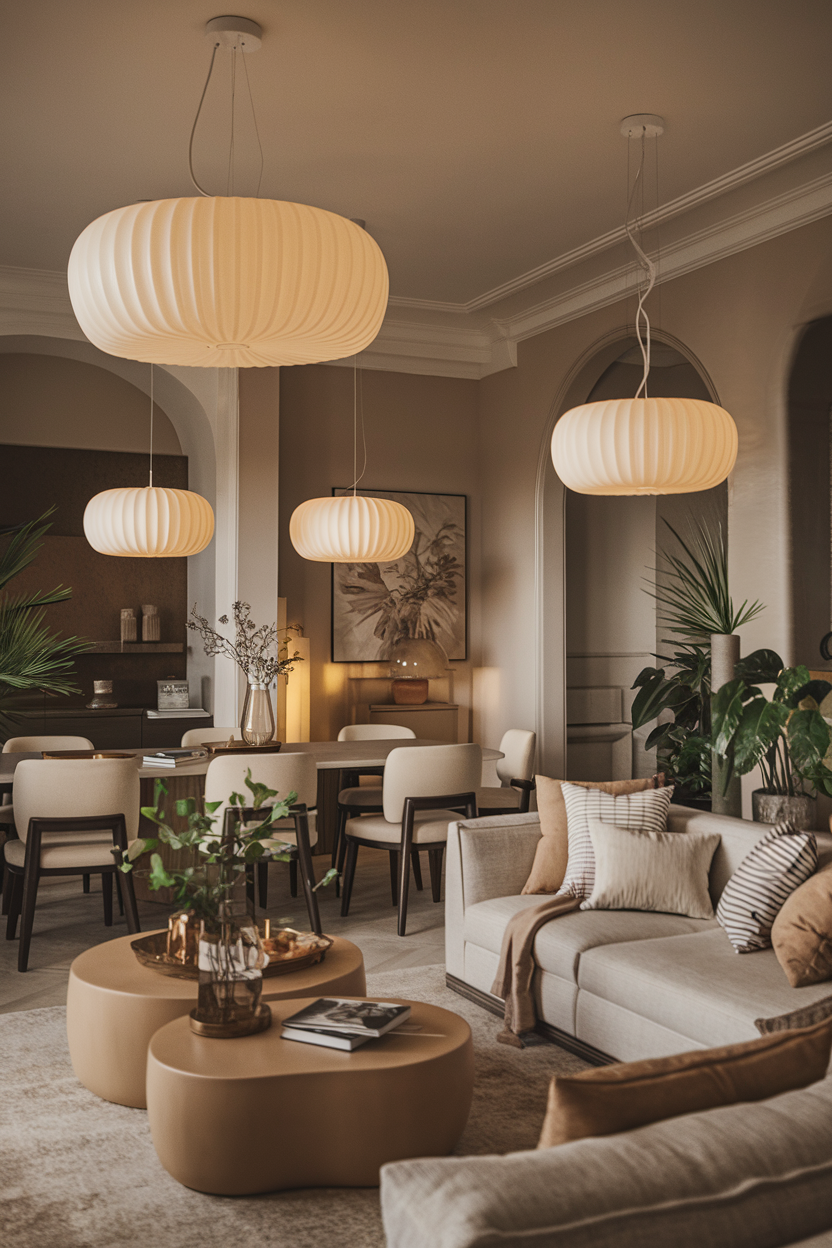
Lighting can make or break a space. By selecting fixtures that complement each other in design or finish, you create a visual link between the rooms. Imagine a stunning chandelier over the dining table paired with matching sconces in the living area—pure harmony!
4. Open shelving as a bridge
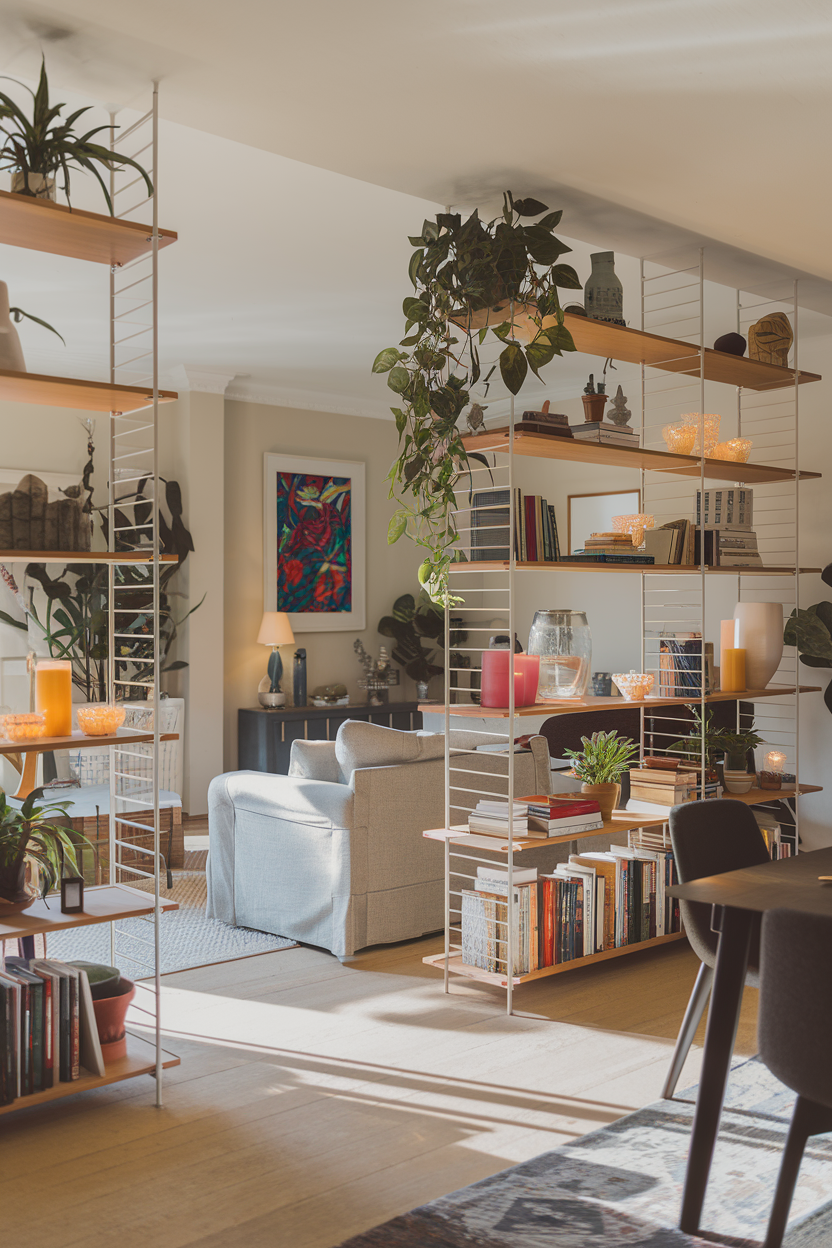
Open shelving isn’t just practical; it’s a stylish connector. Placing shelves between the living and dining areas offers storage and display space while maintaining an open feel. I adore styling these shelves with a mix of books, plants, and cherished decor pieces that reflect the vibe of both rooms.
5. Wall art alignment
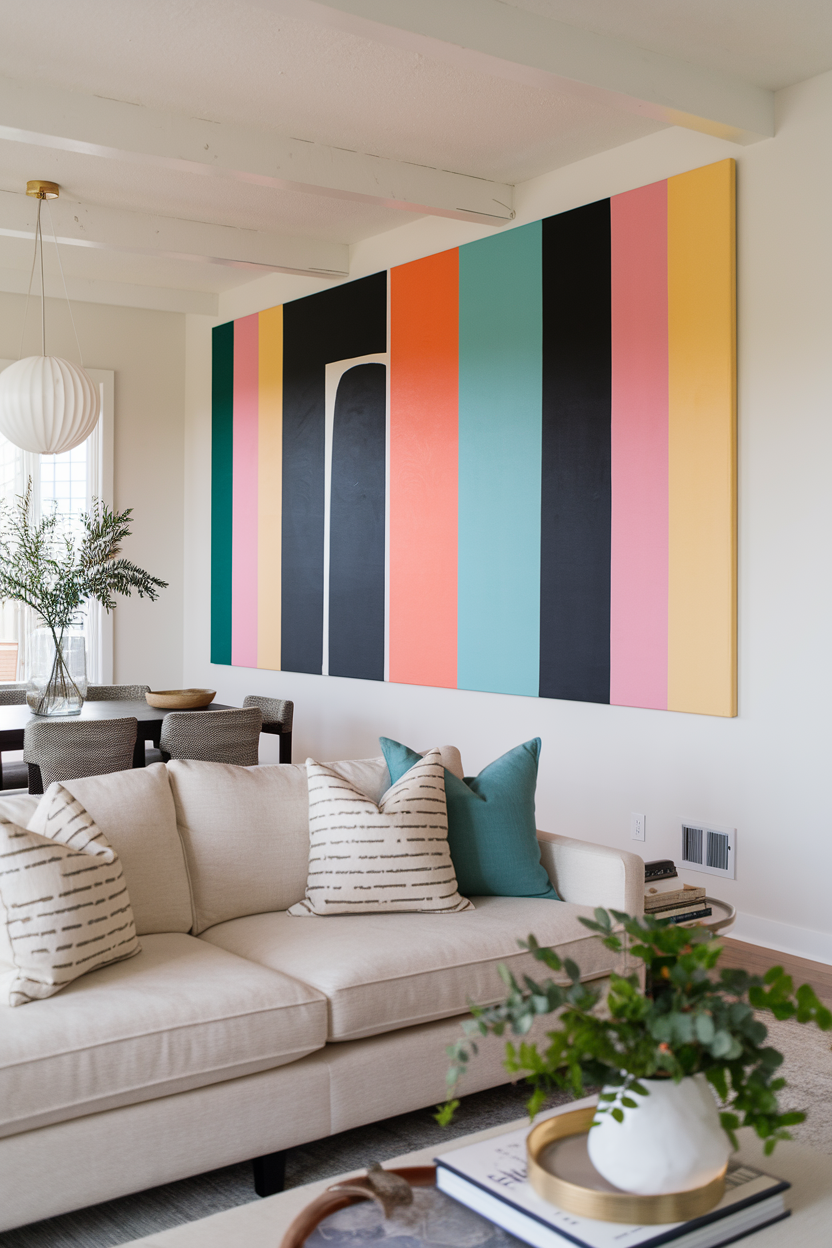
Art has the power to tie spaces together. By choosing pieces that share a theme, color, or frame style, you create a visual thread that links the rooms. Whether it’s a series of prints or a large statement piece that spans both areas, art can be the glue that binds your design.
6. Statement furniture placement
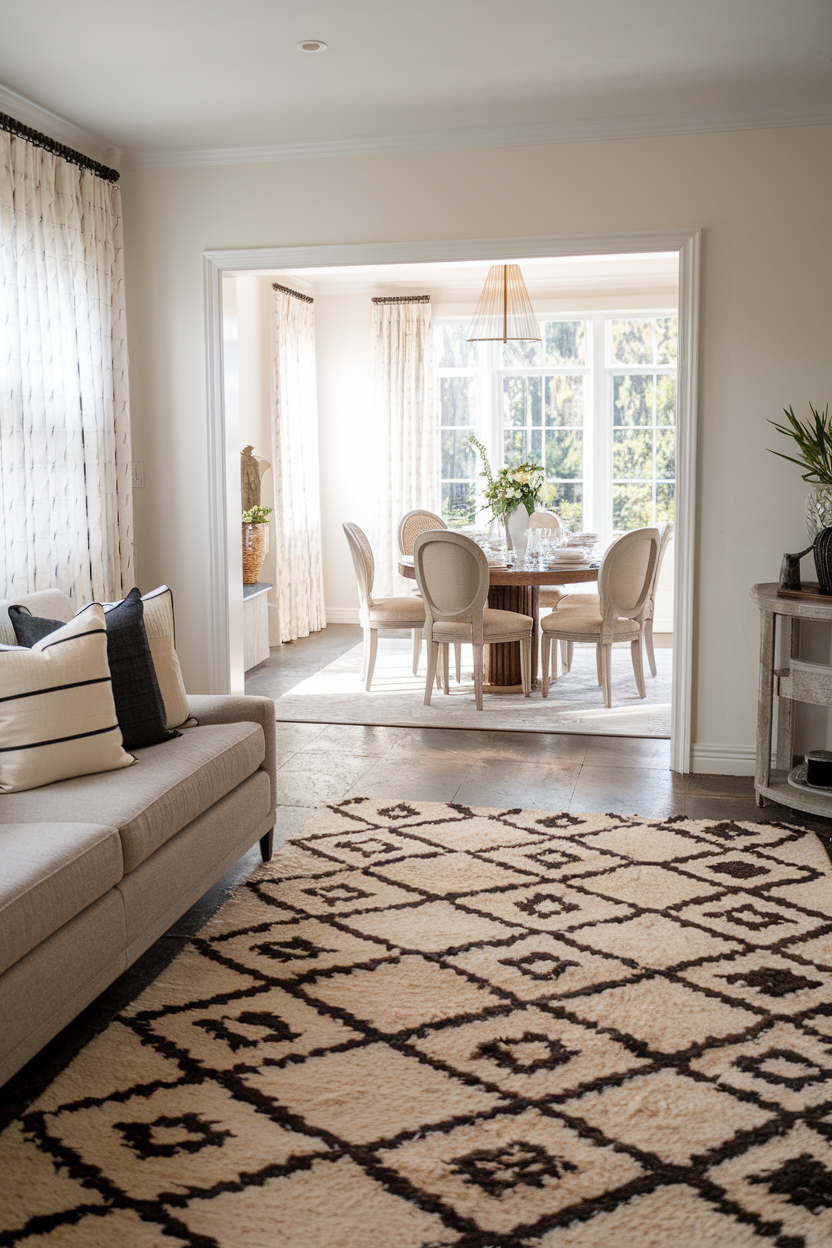
Statement pieces like giant area rugs are fantastic for delineating spaces without the need for walls. Selecting rugs that complement each other in color or pattern helps maintain a cohesive look while subtly defining each area. It’s a trick I’ve used time and again to great effect.
7. Plant styling
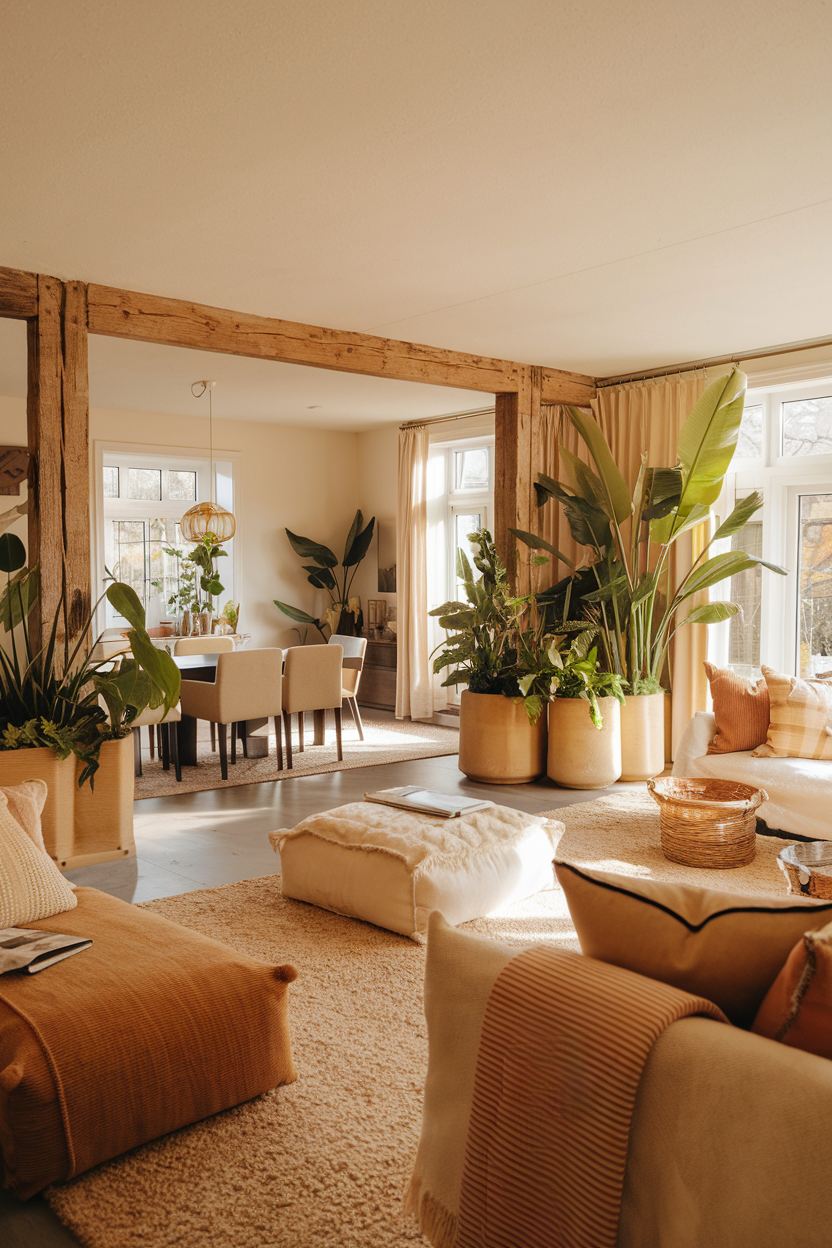
I’m a big believer that no space is complete without a little greenery. When you use plants in both your living room and dining area, they naturally soften the transition and add that touch of life every room needs. Plus, they’re a subtle way to visually connect the two spaces without trying too hard. I love placing a tall plant near the “in-between” zone—it acts like a gentle green bridge.
8. Dual-purpose furniture
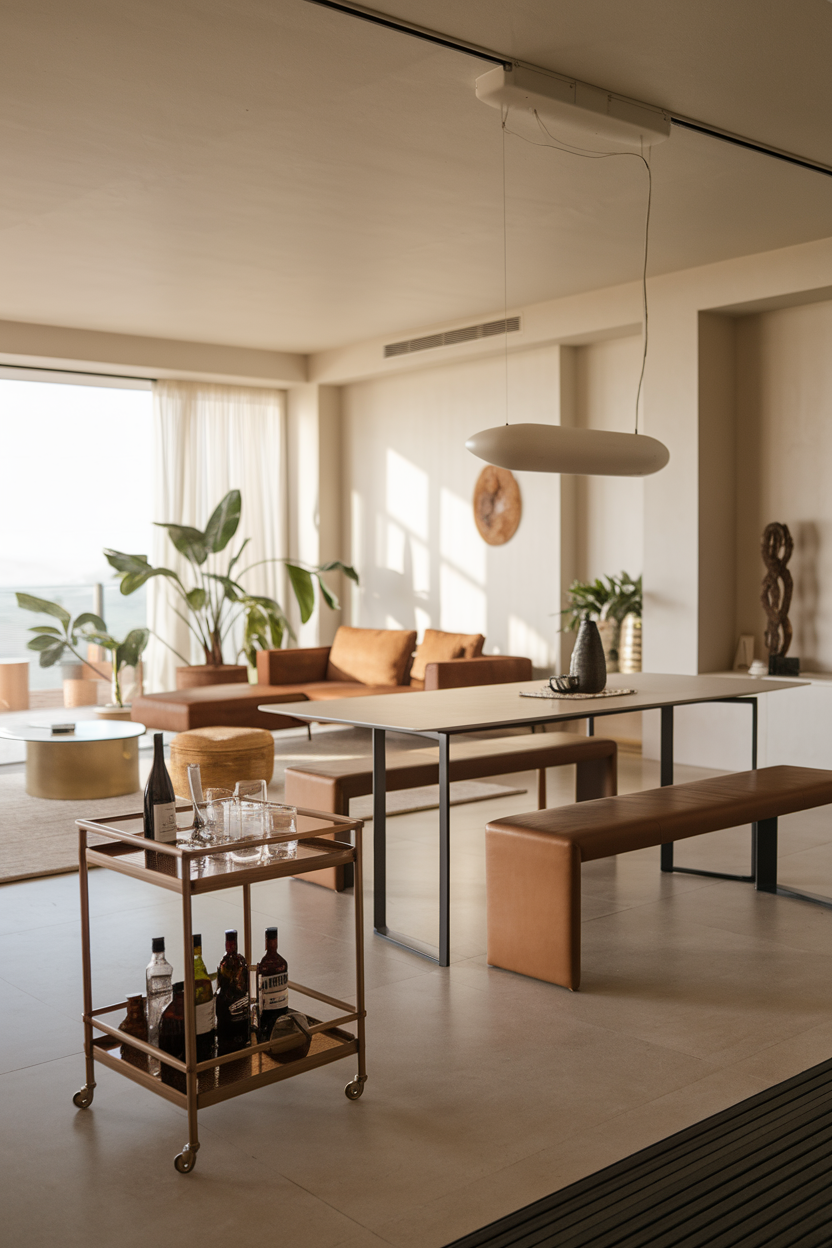
While the furniture in each room serves different purposes, choosing pieces that share a similar style or finish creates a harmonious look. For instance, pairing a sleek dining table with a modern sofa can tie the rooms together beautifully. Or adding a bar cart as a connector is always fun. Hey, it’s 5 o’clock somewhere…
9. Accent wall extension
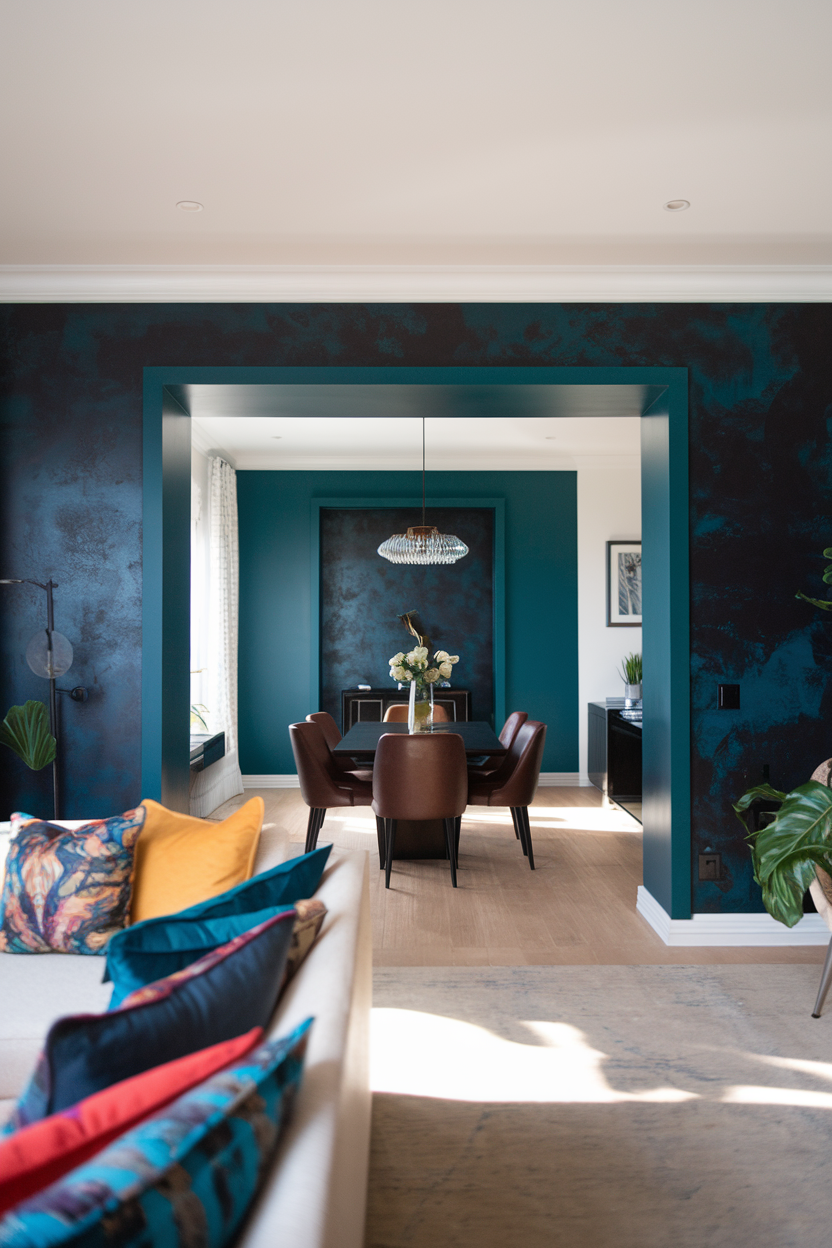
An accent wall is already a statement-maker, but stretching it across both your living and dining rooms? That’s a power move. It’s one of my favorite ways to instantly create connection and flow. Whether it’s a rich paint color or bold wallpaper, this trick ties the rooms together in a big way.
10. Consistent textiles
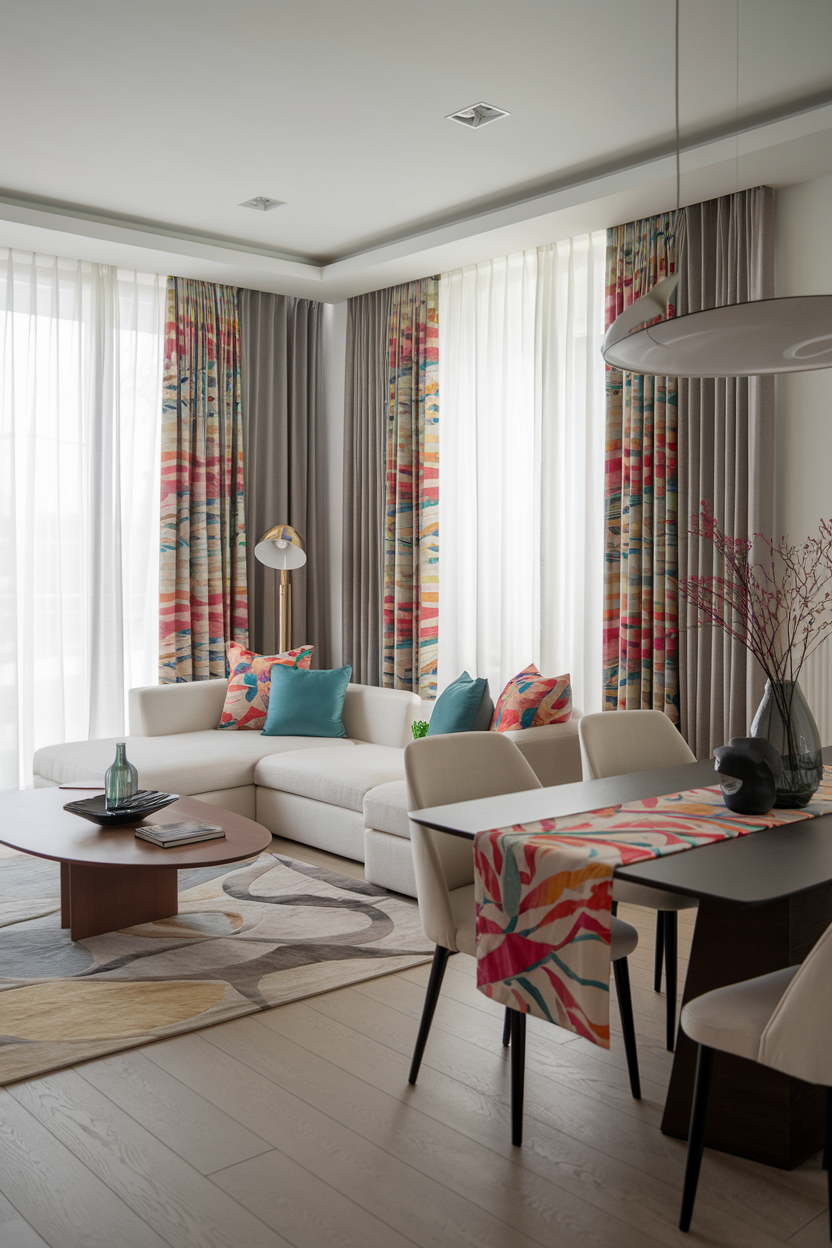
I’m all about cozy textures, and when you carry them through both your living and dining rooms, the effect is effortless. Think matching cushions on the sofa and dining chairs, or curtains in a similar fabric—it’s a subtle trick that makes a big impact.
11. Dividing furniture with purpose
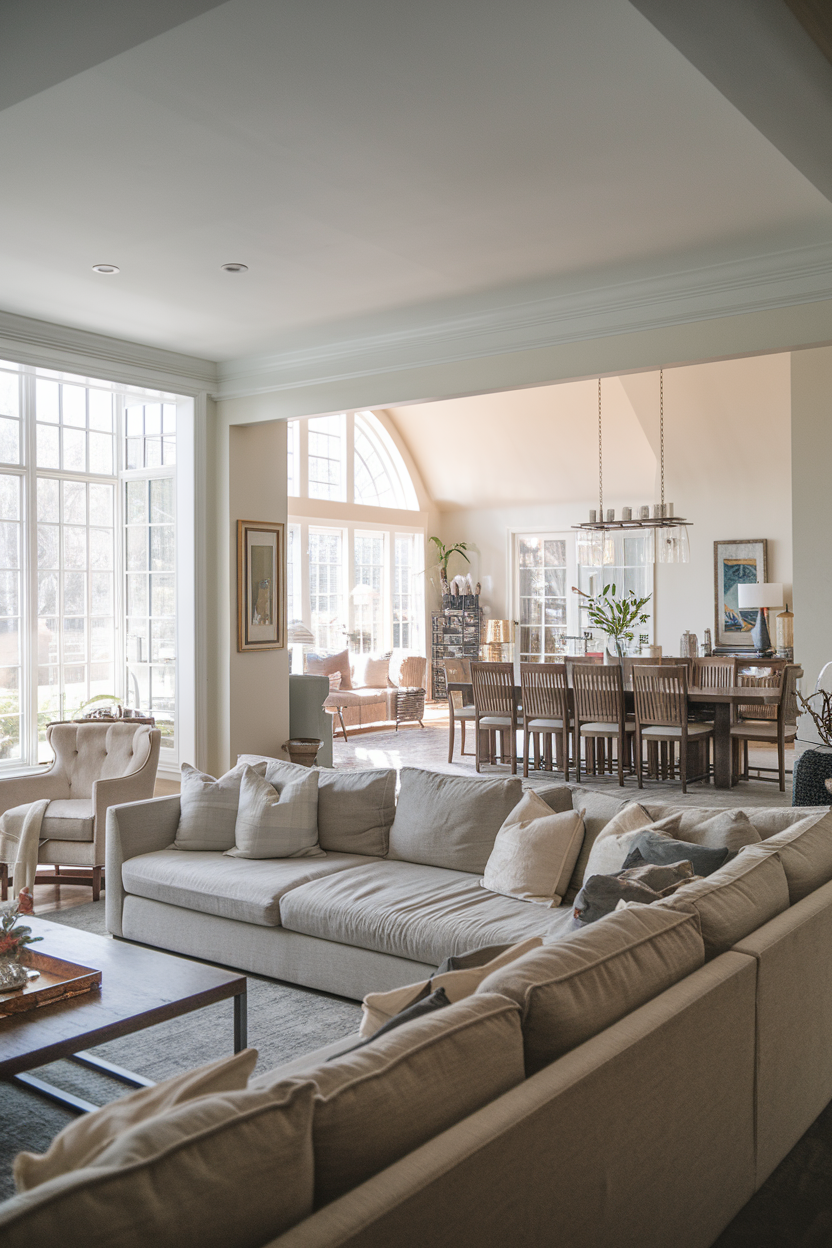
You know I love an open layout, but sometimes a little separation can make things feel more intentional. Enter the backless sofa or low shelf—a functional divider that keeps the connection strong while defining each space. I recommend using a low-profile piece that won’t block light or views.
Final tips for seamlessly connecting your living and dining rooms
Before you start knocking down walls or buying new furniture, try these small but mighty ideas to connect your living and dining rooms. Remember:
- Keep things light and airy—skip anything that cuts off the view.
- Anchor each space with an area rug for that cozy, finished look.
- Stick to one overall style (modern, traditional, coastal, you name it) so it all feels intentional.
- Let in as much natural light as possible—it really is the secret ingredient.
With just a few thoughtful tweaks, you can turn your living room dining room combo into a beautifully balanced, open-concept dream. Like what you see? Leave a comment below!

